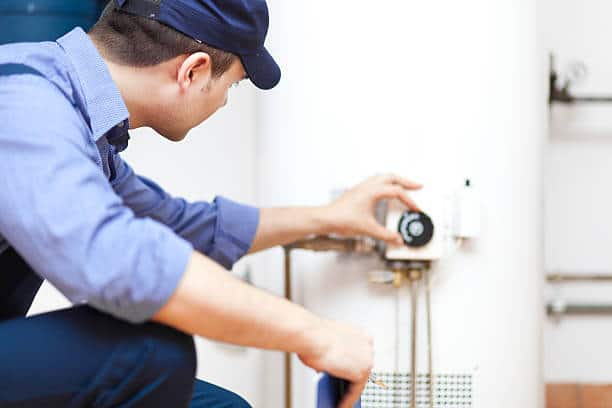Safeguard Your Hot Showers: A Guide to Preventive Maintenance on Hot Water Heaters
Hot water heaters are the unsung heroes of our homes, silently providing warmth for showers, baths, and countless household tasks. But like any hardworking appliance, they require regular maintenance to ensure optimal performance, longevity, and safety. Neglecting your hot water heater can lead to costly repairs, inefficient operation, or even premature failure, leaving you with a cold surprise.
This comprehensive guide empowers you to become a proactive homeowner by outlining the essential steps involved in preventive maintenance for your hot water heater. We’ll delve into the components, address common issues, and equip you with the knowledge to maintain this vital appliance.
Understanding Your Hot Water Heater: A Breakdown of Key Components
Before diving into maintenance procedures, familiarizing yourself with the core components of your hot water heater is crucial. Here’s a breakdown of the essential parts:
- Tank: This insulated container stores the heated water. Regular maintenance focuses on preventing sediment buildup within the tank.
- Heating Element (Electric) or Burner Assembly (Gas): Heats the water within the tank. Maintaining a clean and functioning heating element or burner is essential for efficient operation.
- Pressure Relief Valve (TPR Valve): A safety feature that releases excess pressure to prevent tank ruptures. Testing the TPR valve is a critical aspect of preventive maintenance.
- Anode Rod (Sacrificial Anode): Made of magnesium or aluminum, this rod attracts corrosion, protecting the tank from rust. Replacing the anode rod when necessary extends the lifespan of the heater.
- Thermostat: Controls the water temperature within the tank. A malfunctioning thermostat can lead to scalding or inefficient heating.
Understanding these components and their functions equips you to identify potential issues and ensure proper maintenance.
The Maintenance Checklist: Essential Steps for a Healthy Hot Water Heater
Here are the key steps involved in preventive maintenance for your hot water heater:
- Annual Flushing: Sediment buildup at the bottom of the tank can reduce efficiency and shorten the lifespan of your heater. Flushing the tank annually removes this sediment, allowing for optimal performance. This process typically involves draining the tank and flushing it with clean water. Consulting a qualified plumber for the first flush is recommended, as they can ensure proper draining and refilling procedures. After learning the process from a professional, you can potentially perform subsequent flushes yourself.
- Testing the Pressure Relief Valve (TPR Valve): The TPR valve is a crucial safety feature. Testing it annually ensures it functions properly and releases excess pressure if needed. Locate the TPR valve (usually near the top of the tank) and lift the lever briefly. A short burst of water is expected. If the valve leaks continuously or doesn’t activate at all, consult a qualified plumber for replacement.
- Inspecting the Anode Rod: The anode rod attracts corrosion, protecting the tank. Over time, the rod deteriorates. Visually inspect the anode rod (located within the tank) annually. If the rod is significantly eroded or less than half its original size, replace it with a compatible model. Consult a plumber or refer to your heater’s manual for specific replacement instructions.
- Checking for Leaks: Regularly inspect your hot water heater and surrounding pipes for any signs of leakage. A small leak can worsen over time, leading to water damage and potential safety hazards. Address any leaks promptly, either by tightening loose connections or seeking professional assistance for more serious issues.
- Maintaining Proper Temperature: Most hot water heaters come pre-set to a safe and efficient temperature (around 120°F). Adjusting the thermostat unnecessarily can lead to scalding risks or wasted energy. Consult your owner’s manual for recommended temperature settings and avoid tampering unless absolutely necessary.
Following these steps will significantly enhance the longevity and performance of your hot water heater, saving you money on repairs and ensuring a steady supply of hot water for your household needs.
Common Hot Water Heater Issues: Troubleshooting Tips
While preventive maintenance is key, familiarizing yourself with common hot water heater issues can empower you to identify problems early on. Here are some frequent concerns and troubleshooting tips:
- No Hot Water: This could be due to a malfunctioning heating element (electric) or burner assembly (gas), a tripped circuit breaker (electric), or a faulty thermostat. Consult your owner’s manual for troubleshooting steps or seek professional help if needed.
- Lukewarm Water: Sediment buildup, a malfunctioning thermostat, or a faulty heating element could be culprits. Regular flushing, checking the thermostat, and consulting a plumber for potential heating element issues are recommended courses of action.






More Stories
Is there a lifetime limit on epidural steroid injection?
What is Section 20 of the Motor Accident Insurance Act (Queensland)?
Where to Watch USMNT vs Jamaica National Football Team